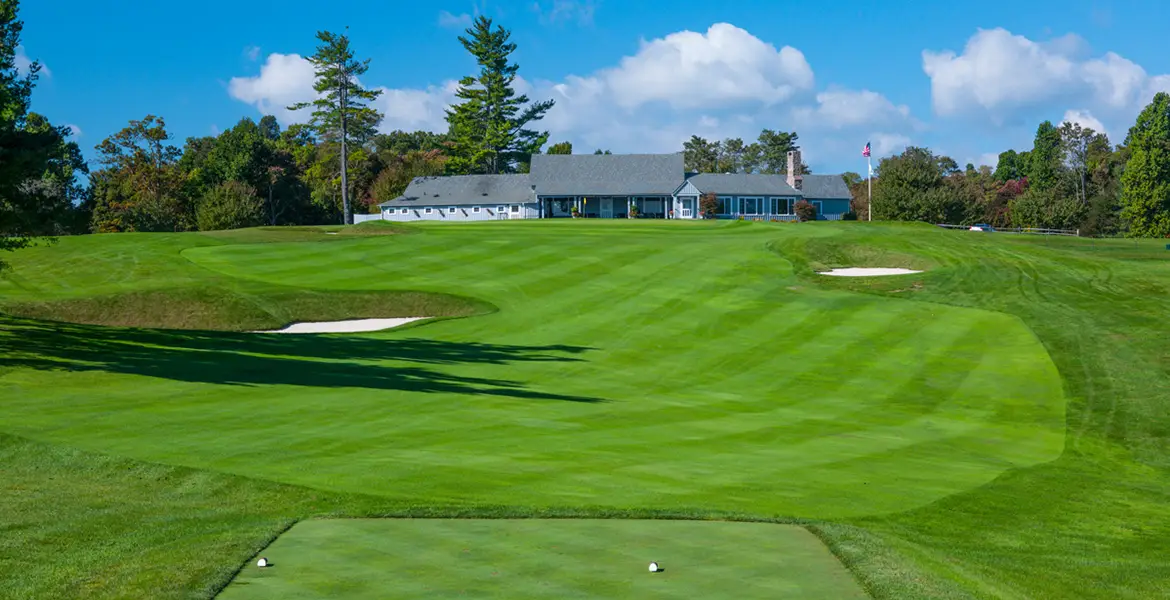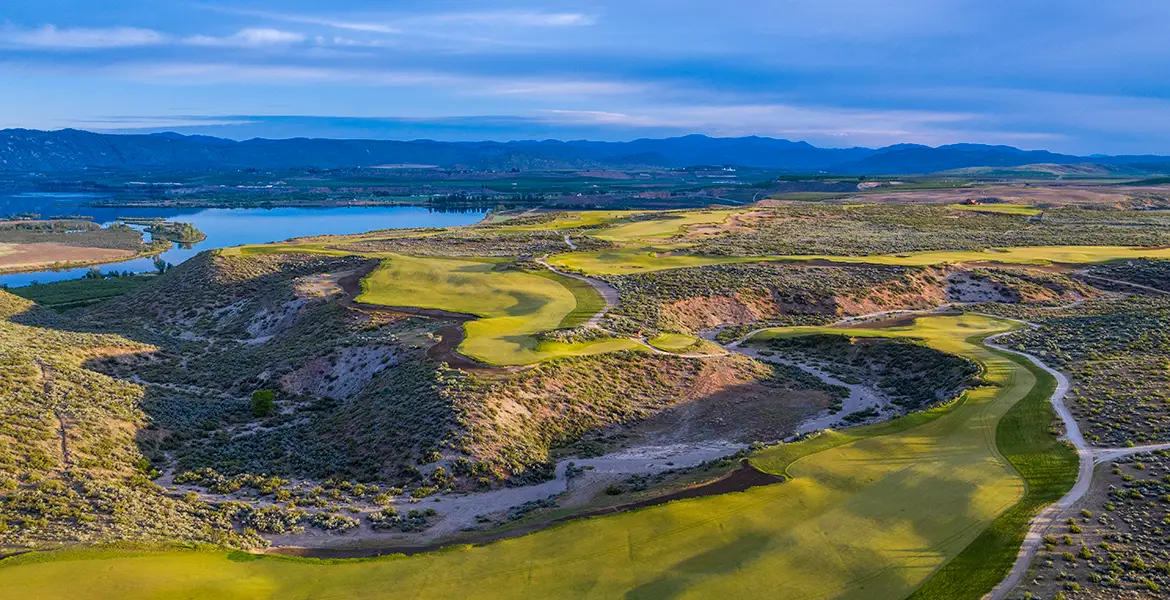So, you’ve played all the British Open courses in Scotland? You’ve made the pilgrimage north to Dornoch? Taken on the west of Ireland for a creamy pint and a “soft day” at Lahinch? My, my, you do get around.
What about Devon? What, you don’t know her? Oh, dear.
Devon is a county. In England. Perhaps you’ve heard of its most famous club, the Royal North Devon, also known as Westward Ho! It’s the “cradle of English golf,” where Englishmen first played the game back in 1863. It’s where Old Tom Morris laid out the country’s first links course on common land, where grazing horses and sheep still loll about the countryside.
Westward Ho! hasn’t changed much since W. Herbert Fowler revised it in 1908. Actually, Fowler altered very little, given the covenants that “protected” the land. To explore the genius of Fowler, one must gaze north across the Taw River estuary toward a heavenly place known as the Braunton Burrows. Unlike Westward Ho!, which is relatively flat, Braunton is made up of a towering range of dunes that hide the sea from those fortunate enough to visit and play one of England’s top-five links: the East Course of the Saunton Golf Club. Tee it up here just once and you’ll understand why Harry Vardon, the six-time Open champion, said he should like to retire from competitive golf and play golf at Saunton, just for the sheer joy of it.
Need more convincing? In their 1929 book, The Architectural Side of Golf, Tom Simpson and H.N. Wethered selected Saunton “without hesitation” as the golf course in the British Isles that “as nearly as possible approaches the ideal.” They admired its 14 par-4s, especially the fearsome foursome of two-shotters—the shortest is 402 yards long—that open the course. In imagining their eclectic British course, they included the present 16th, a 430-yard, right-to-left shot” over the high sand hills down the left and the “guarding waves of sand hills” in front of the green tucked in the hollow of the dunes.
Golf had been played at Saunton since 1893, but it wasn’t until 1919 that Fowler brought the club to prominence. That surprised no one, for he had already earned praise creating the Old Course at Walton Heath. (He fashioned his only course in America, Eastward Ho!, in 1922 on Cape Cod in Massachusetts.) Bernard Darwin said of him, “I never knew anyone who could more swiftly take in the possibilities of a piece of ground, and I think his clients thought, quite unjustly, because he had not taken sufficient pains, because he could see so clearly and work so fast.”
His creation at Saunton hosted its first major competitions in 1932 when both the Home Internationals and the British Ladies’ Amateur took place over a fortnight. England won the team competition easily, and in the Amateur championship one of its star players, Enid Wilson, claimed her second of three successive titles.
Shortly thereafter, in 1935, Fowler laid out a second “relief” course for the club. Unfortunately, the layouts disappeared after British and American forces used the club and its surroundings as an army training facility during the second World War. It was from Saunton that many American troops left for the Normandy Invasion. Practicing for the invasion, a battalion foundered in a storm surge and many soldiers drowned, including roughly 700 Americans. Even so, the club’s written history takes a resentful tone toward the disruption occasioned by their stay.
After the war, German prisoners took on the precarious job of clearing land mines from the sandhills. They also planted marram grass over large areas of the dunes to help stabilize the otherwise shifting sand. The monumental task of reconstructing the East Course began in 1952. Since Fowler had died in 1941, the task fell to C. Kenneth Cotton, the brilliant scratch golfer who reworked many other similarly crippled courses in the post-war era: Royal Lytham, Sunningdale and Royal Porthcawl. Cotton made only a few significant changes to Fowler’s design, notably to the opening and closing pairs of holes. (The first and second greens were changed again in the 1960s.)
The strength of the course has always been its par-4s. These holes leave little room for error, as they demand both a decent drive and approach. A par-5 gives you an extra shot to recover and a par-3 seems somehow less penal, but err slightly on a par-4 and you’re likely to try a recovery shot you have no business playing. Courses like Saunton prey on that sort of arrogance.
This one asks you to tackle 10 par-4s in the first dozen holes. And don’t start scanning the scorecard for the “easy” ones. Two of the toughest holes are merely 36 yards, the third and ninth. The former is an impressive hole that requires a drive between two hillocks. You must be dead straight or you’re, shall we say, dead. The latter is a left-hand dogleg that turns into the prevailing wind. Try that on a day when you’re slicing.
Similarly, the “signature” 16th doglegs left against the wind. However, the hole is 25 yards longer and slightly uphill, the drive is over sandhills and the green is tucked behind a diagonal ridge that juts in from the left. A club handbook calls it a “magnificent hole full of charm from tee to green.” Personally, I’d have left the “c” off the word “charm.”
By comparison, Saunton’s par-3s are mild: 112, 136 and 202 yards off the back markers. Absolutely the best of these is the 13th, which offers panoramic views of the course, the low clubhouse with its columned porch and the lovely hillside beyond that is dotted with sheep. It’s all so … English! You could go to Saunton and do nothing more than sit on the wooden bench at this tee and have a great afternoon. Eventually, you’d just have to play a shot over the hollow to the inviting green set slightly below. It’s a fairly large target, raised slightly above a tangled mass of knee-high grass and scrub.
One of the finest features of Saunton is its paucity of bunkers, especially greenside bunkers. They simply aren’t needed. The greens are very Harry Coltish: slightly raised so if you miss one you have an awkward pitch to save par. But you don’t even have to pitch the ball. You can take your putter or your 3-iron, or whatever else is in vogue, and have fun using your imagination.
Today, the East Course meets every test of a great golf course. The land dictates the design. The holes twist and turn, bringing the wind into play from every angle. They lodge in one’s memory after a single playing. Their conditioning is first-rate. And the scenery is gorgeous (you should see the sunsets.) Apart from lacking the “perfect” symmetry of a par-72 layout, Saunton is unsurpassed. It probably even has “high shot values,” whatever those are.
Even though the East Course stretches little more than 6,700 yards, it has hosted a number of top events. Consider that professional record is only 67, a mark set by four players during the 1966 PGA Championship won by Guy Wolstenholme with a 278 total. Women professionals have also had a go at Saunton, competing in 1983 and 1984 in the Sands International Tournament. They returned in 1985 for the Ladies Professional International that saw Scot Dale Reid set a single-round tournament record (68) on her way to victory. Top amateur events held at Saunton include the British Ladies Amateur, the English Amateur, the West of England Open Amateur Stroke Play Championship, the Brabazon Trophy and the R&A’s St. Andrews Trophy (Great Britain/Ireland versus the continent of Europe).
As for Saunton’s West (New) Course, it is a fine layout, although somewhat shorter, at 6,322 yards. Finished in 1975 by Frank Pennink (who won the 1937 England Amateur at Saunton), the West was later revised by Donald Steel. A sidelight: Saunton is also a gathering point for serious botanists, as more than 350 varieties of wildflowers flourish in the area.
Devon. Get to know her.






